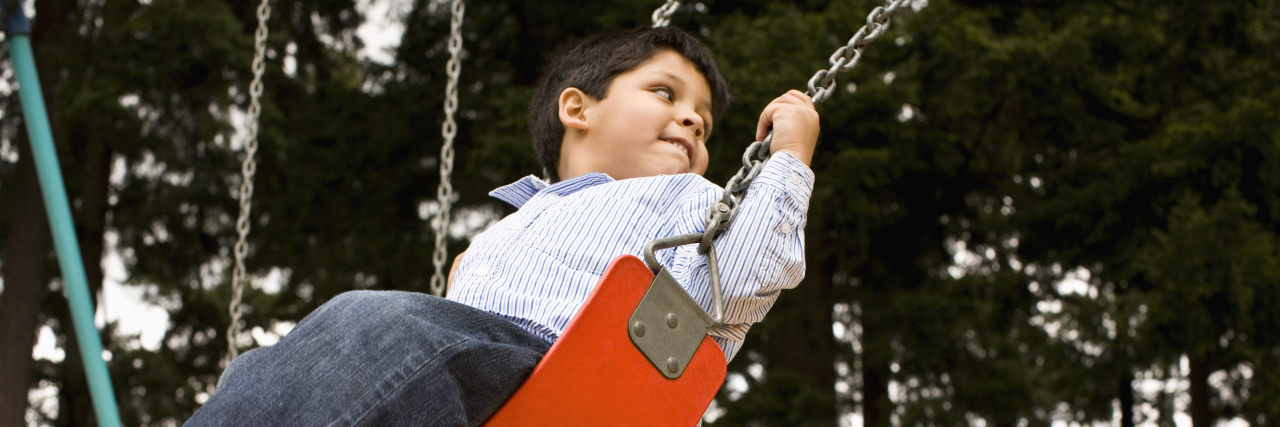As a child you were taught the five senses: sight, taste, smell, touch and hearing. But did you know there are actually eight? The other three lesser known senses are the proprioceptive sense, vestibular sense and interoceptive sense. In this blog we will discuss the vestibular sense and how it relates to people with autism spectrum disorder, as well as sensory processing disorder, attention deficit hyperactivity disorder, language delays and other developmental disabilities.
Does your child exhibit any of the following?
- walks/runs unsteady or cautiously
- clumsy and falls frequently for no apparent reason
- difficulty being still or unable to maintain attention/focus without moving
- either doesn’t get dizzy with excessive spinning or gets overly dizzy with little spinning
- Is afraid/dislikes or seeks/craves activities where the feet leave the ground such as swings, slides, jumping, climbing
- dislikes having head tilted back
- poor postural control, slouches/falls from chair
- poor hand-eye, foot-eye coordination
- appears unaware of risks of height or moving equipment
My son is 3-and-half and has autism and ADHD. I can pretty much check off most of the items on the list above. It’s called vestibular dysfunction. To understand vestibular dysfunction you need to first understand what the vestibular system is and how it works.
The vestibular system can be described as the body’s internal GPS. As you move, fluid in the inner ear activates sensors inside the ear. That data along with information from your other senses, such as what you see, gives you a sense of where you are in space. For instance, if you are standing or sitting, or if you are moving and if so how fast and in what direction. The vestibular system is comprised of two pathways of input, the semicircular canals which indicate rotational movements, and the otoliths which indicate linear accelerations. (Click here for a visual description of the vestibular system.)
When there is dysregulation in the vestibular system, the body doesn’t move confidently, smoothly and safely. Children can have difficulty with balance and coordination. It can cause them to be fearful or impulsive. It can be a severe safety issue. A child may jump from a high surface, such as a piece of furniture, and get injured because they can’t judge the height.
Vestibular dysregulation can manifest in either hypersensitivity or hypo-sensitivity. For example, a child may either get overly dizzy with mild spinning or not dizzy at all with extreme spinning.
The good news is your child’s vestibular system can be strengthened. An occupational therapist is a great resource for this. They can help you create what is called a “sensory diet” for your child’s specific vestibular needs. The OT will evaluate the child to determine which sensory input they are overreacting to and which input they are under reacting to, then calibrate sensory input to meet the child where they are and help move them forward. A sensory diet may include things such as:
- bouncing using a mini trampoline or therapy ball
- swinging in a hammock or swing
- spinning on a swivel chair or sit-in-spin
- rocking in a rocking chair or rocking horse
- climbing using a ladder or playground equipment
- hanging upside down from monkey bars or trapeze
- outdoor games such as soccer, catch
- slides
- swimming
This is only a small sampling of hundreds of options for creating a sensory diet to target vestibular dysfunction. It is important to work closely with an OT for this, as if you overstimulate the vestibular system you can worsen the dysregulation. Often just a few minutes of an activity is enough.
My son used to have difficulty swinging in a swing. He could climb and spin with ease, but the back and forth motion of the swing severely dysregulated him. His OT first started by having him just lie on his tummy on the swing without movement. After a few successful trials, she placed a toy on the ground he needed to reach for while on his belly on the swing. After success with that she began to slowly move the swing. She worked with him for about a year in the gym doing short activities like this. It worked! Before when we visited the park, he’d avoid the swings. Now he enjoys them.
The more I learn about the science behind the autistic brain, the more sensitive and empathetic I am towards my son’s needs. It is my hope not to change my child, but to help him overcome the challenges that often disrupt his ability to let his strengths shine!
Getty image by Todd Warnock.

